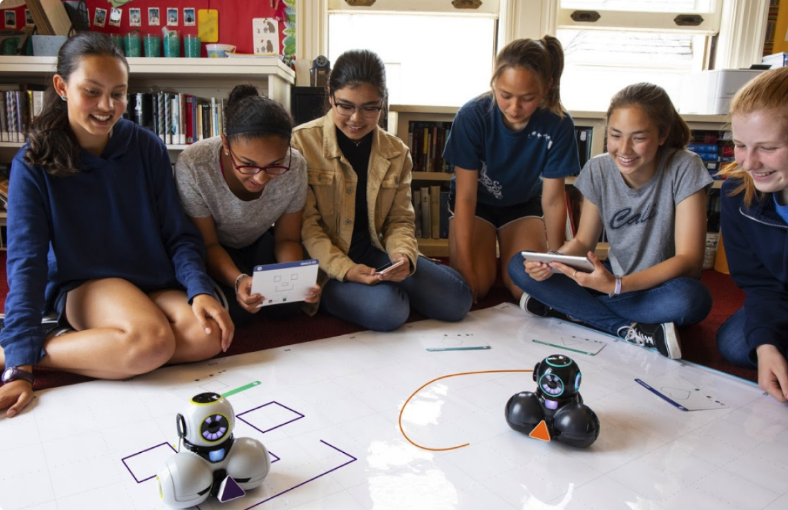
STEM Education, a term initiated by the National Science Foundation, is an educational approach which focuses on one or more of the four disciplines of science, technology, engineering, and math. In an era when technical and scientific skills are increasingly important in the work force, exposing children to STEM learning in the early years is key.
Currently, only 26% of STEM jobs are held by women. It is important to ensure that girls as well as boys are exposed to and encouraged in the area of STEM. It’s never too early to introduce STEM to your child and to consider how to sustain interest in STEM in elementary school.
STEM for Infants and Toddlers
It is important to help instill an attitude of inquiry from an early age. Children are naturally curious about their world, so give them plenty of opportunities to explore and to learn through play by providing interesting toys for toddlers and infants to examine. With close supervision, also offer real objects to study and learn about. Often real objects, like an apple or a squash, a shiny water bottle or textured paper, are much more interesting to the littlest learners than plastic toys and materials. Through innovative play, your child’s STEM Education can start at home.
Preschool and School-Age STEM Learning
With preschoolers and school-agers, you can begin to introduce the scientific method, a systematic and logical approach used to answer a question or solve a problem. Try working through some of the steps together:
-
Start with a question your child has asked, like “Which is faster, my toy race car or this toy truck?” Talk about how you can try to solve the problem together. Explain to children that research is how we find out more to help us answer questions.
-
Talk to children about how scientists, after making observations, come up with their best guess or hypothesis. Try testing the two vehicles. After testing, ask your child which she thinks is faster.
-
Provide intentionally selected materials and space where children can test their hypothesis. Test your hypothesis by comparing speeds in different settings such as the sidewalk, on a rug, etc.
-
Help your child learn the importance of recording her findings. Encourage her to draw pictures showing what happened in her experiments or she can dictate the results to you which you write down.
-
Reflection is often the most important part of learning. Ask your child what she learned. Help her understand that experiments don’t always work out the way we expect, but we may learn new ways to problem solve or create something even better than we planned.
-
Of course, not all activities have to be that formal. You can also use language like, “let’s solve that problem” or “what do you think will happen?”
STEM Activities for Preschoolers and School-Agers
Continue to use scientific language to explore new STEM games and activities for preschoolers and school-agers:
-
”S” is for science. The basis for scientific discoveries is being a good observer. You can help build strong observation skills in your child by playing games that include examination. Talk about how observation helps us think critically and solve problems. Help your child develop observation skills by playing “I Spy” on long car rides. You and your child can take turns being the questioner and the guesser. The questioner picks an object in the child’s sight and says, “I spy something green (or round or bumpy or large).” The questioner guesses until he gets it right. A variation of this would be “20 questions,” where the guesser gets 20 “yes-no” questions to narrow down what the questioner is asking about. The object in question does not necessarily need to be in the guesser’s sight.
-
”T” is for technology. Show how to safely search the internet (with your child safe software turned on) to find the answer to problems you are trying to solve.
-
”E” is for engineering. Offer building challenges that create STEM learning opportunities:
“Can you build a tower with these cups that is taller than your waist?”
“Can you make a bridge that the plastic animals could pretend to walk across?”
“Can you use all the paper cups and make a structure that you could park your toy car in?”
-
”M” is for math. Explain that patterns are displays in nature or are made by people that repeat themselves. Help your child look for patterns in the world such as repeating numbers on a license plate or rings of wood on a cut tree trunk.
Use your imagination for more ideas on STEM activities to do at home. Think about what experiences encouraged you as a child to know more about science. Was it a visit to the local creek to find frogs and salamanders, locating a bird nest and recording the mama bird’s activity, watching your mom fix the leak in the kitchen sink, or playing float and sink with the boats and other objects in the bath tub?
STEM activities aren’t so much about planning lots of activities that require specific materials and processes; it is more about developing learning habits of inquiry and critical thinking skills.

Discover more about STEM with RobotLAB !
Check our products page, and our learning platform Engage!K12 that offer a wide range of lessons for students and teachers! No robotics experience required.
You can check the original article here: https://www.brighthorizons.com/family-resources/stem-education-what-is-stem-why-does-it-matter



